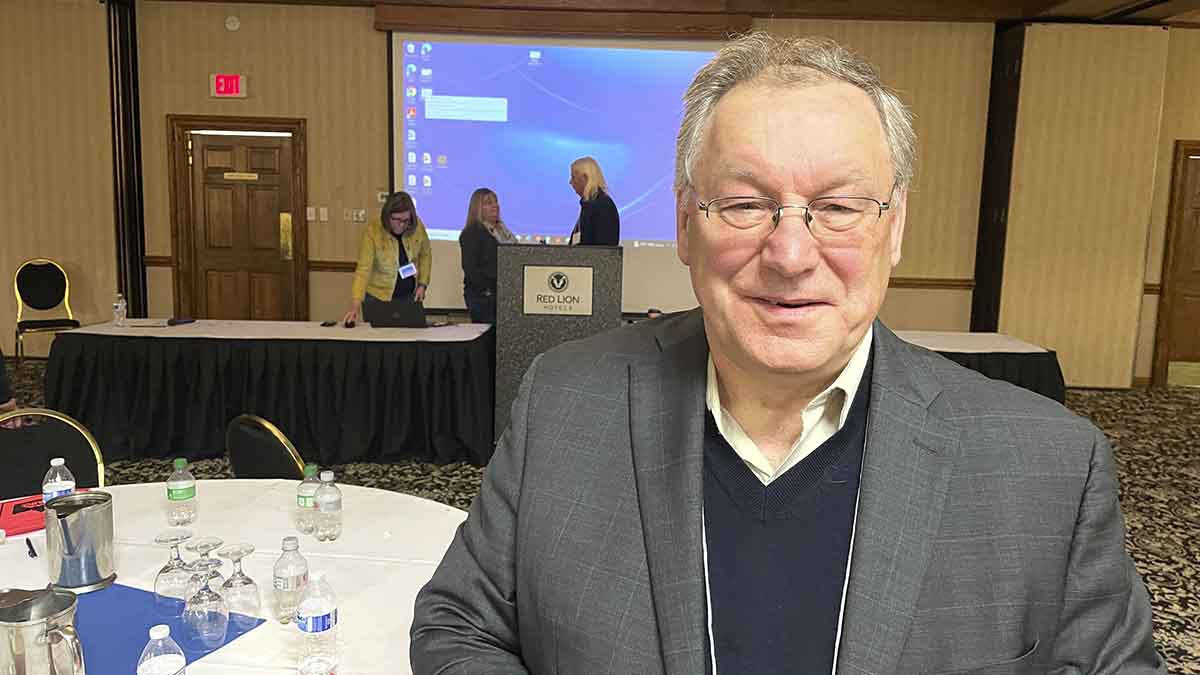Spud Diseases Present Moving Target
January 25, 2023
Once the scourge of the seed potato industry, potato leafroll virus is now all but forgotten.
However, University of Idaho plant virologist Alexander Karasev warns conditions may be aligning for leafroll to make an unwanted comeback.
Karasev believes the rollercoaster ride the industry has faced in dealing with leafroll throughout several decades is a prime example of how controlling potato seed pathogens presents a moving target. Problems of the past may resurface as variables shift, and as soon as one challenge is resolved, another issue is apt to emerge.
Karasev offered his insights during a speech, “Potato Disease Control, Changing Targets Over Time,” on Jan. 17 during the 54th Annual Idaho Seed Potato Grower’s Seminar in Pocatello.
“You have multiple factors involved in the possible introductions of new pathogens and vectors,” Karasev said. “All of these may affect the relative significance of different pathogens for potato certification. It’s like a living organism, so don’t think it’s going to be like this forever.”
Potato leafroll virus, which is spread by colonizing aphids, was historically responsible for yield losses in excess of 50%. Infected plants become stunted and produce smaller tubers with necrosis of the vascular tissue. The arrival of the pesticide DDT, effectively controlled colonizing aphids wand leafroll took a backseat to other concerns. In the 1970s, leafroll returned with a vengeance due to the ban on DDT.
In the early 2000s, a new group of chemicals, neonicotinoids, was released, which once again relegated leafroll to a minor issue.
“There are practically no colonizing aphids in the fields anymore, so there’s practically no leafroll in potato fields,” Karasev said.
However, several states have restricted neonicotinoid use based on concerns for pollinators, and the future of the group of chemicals is uncertain. The onset of resistance to neonicotinoids could also pose a problem.
“Especially for leafroll, I’m urging people to keep an eye on regulations. The chemistry that is available today may be banned tomorrow,” Karasev said. “In this case you will have an outbreak of leafroll.”
In about 2002, shortly after leafroll again left the industry’s radar, another aphid-vectored disease — potato virus Y (PVY) — emerged as a major threat that has become the primary reason for seed lot rejections. Unlike with leafroll, aphids can pick up PVY within seconds of feeding and spread it long before insecticides have a chance to take effect.
Some potato cultivars were bred with PVY resistance. However, they were developed in the early 2000s to resist the predominate strain at the time, PVY-O. Today, the strain PVY N-Wilga comprises more than 70% of infections, followed by PVY NTN, rendering some of the resistant cultivars less effective.
A couple of other diseases that used to be devastating for seed potato growers have been held in check because of the advent of using tissue cultures — plants grown from stem fragments in an artificial medium within a laboratory to produce clean early generation seed.
Potato spindle tuber viroid was a major problem in the early days of seed certification but was declared eliminated in North America in the mid-1980s thanks to the use of tissue cultures in seed propagation. Bacterial ring rot, once the primary reason for seed lot rejections and now relatively rare, is another success story resulting from the industry’s adoption of tissue cultures.
Looking ahead, potato mop-top virus — a pathogen that’s most efficiently spread through soil — looms as a new threat. Since 2011, it’s been found in every major potato producing state. It’s spread by the vector Spongospora subterranea, which also causes the disease powdery scab. Potato mop-top virus is currently not covered by the state’s potato seed certification program, a problem Karasev feels should be remedied.
“It’s not tested for. Technically, there is no control of any sort at the moment,” Karasev said. “This is something that industry might need to think about.”
Karasev advises potato growers and agronomists to be vigilant and to report anything out of the ordinary in their fields.
“Remember that it all changes,” Karasev said. “You can never rest if you are a potato grower.”
Visit the Potatoes website for more information on U of I potato research, as well as expert insights into potato production and management.

About the University of Idaho
The University of Idaho, home of the Vandals, is Idaho’s land-grant, national research university. From its residential campus in Moscow, U of I serves the state of Idaho through educational centers in Boise, Coeur d’Alene and Idaho Falls, nine research and Extension centers, plus Extension offices in 42 counties. Home to nearly 11,000 students statewide, U of I is a leader in student-centered learning and excels at interdisciplinary research, service to businesses and communities, and in advancing diversity, citizenship and global outreach. U of I competes in the Big Sky and Western Athletic conferences. Learn more at uidaho.edu.






